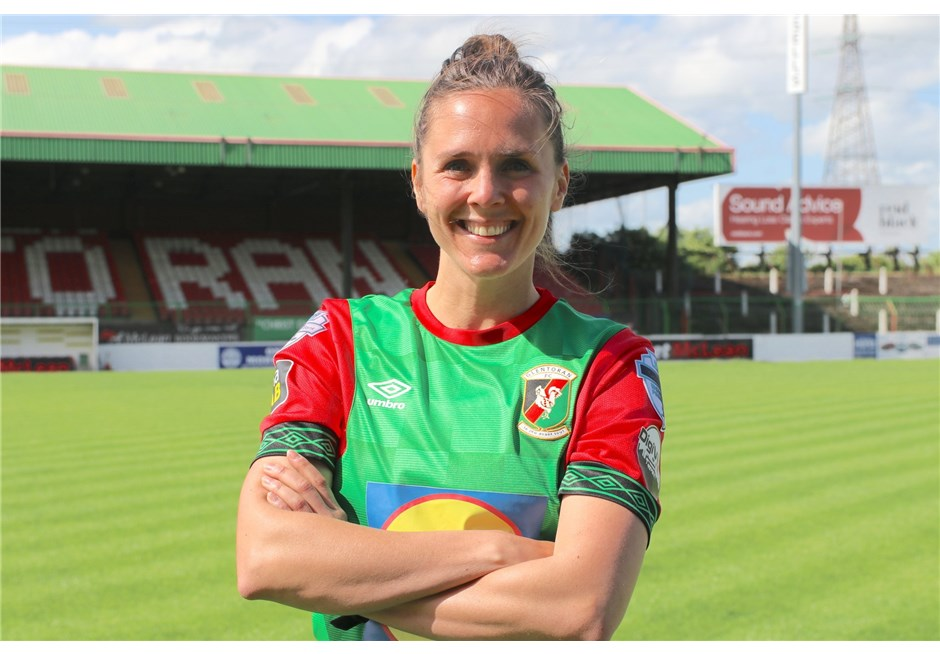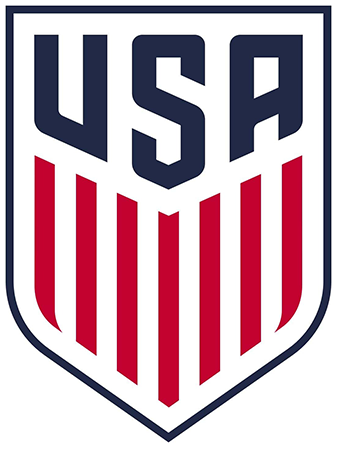
Written by guest contributor – Jessica Davis
Jessica Davis is a professional soccer player from the United States. She has spent the past 5 years playing overseas in four different countries, including Australia, Sweden, Northern Ireland, and Denmark. Exposure to European sports structures led her to question the United States’ “pay to play” model. She fondly remembers her humble beginnings in sport and believes that elite soccer in the states is becoming increasingly more challenging for families with modest means, thus limiting its accessibility and stunting the progression of the sport as a whole.
In the mid-90s, if you had found yourself in Alexandria, Virginia, heading down the hill on Phillips Drive, you would have seen a small house with white siding and green shutters perched on the raised lawn of a corner lot. If you looked closely, you would have seen a garden overgrown with flowers and vegetables nestled in front of two old sheds housing rusty tools, watering cans, and a family of bikes. And if you looked even closer and timed it right, you just might have caught a glimpse of a little blonde girl clumsily kicking a soccer ball around a line of upside-down wine bottles lodged deep into the earth.
In today’s age, this almost certainly would attract strange glances, cell phone-recorded videos, and a possible health and safety disaster — but we’ll get to that.
I started playing soccer the same way many kids did back then. During recess, a cluster of boys — yes, boys — would head out to a big, open grass field. I followed closely behind, curious about their destination. This big, open grass field, as it turns out, was for soccer, and little did I know that this simple school-time play-break would turn into a decades-old love affair that has given me an education heavily subsidized by a scholarship, opportunities to live, travel and play professionally abroad, and almost every beautiful and challenging life lesson I’ve learned.
I have lived and played soccer in the United States, Australia, Sweden, Northern Ireland, and now Denmark. After an unforgettable four years with Penn State University Women’s Soccer and a short-lived (and very premature) “retirement” that ended at 27, I re-emerged into the soccer scene with a burning desire to play professionally and make good on the dreams I had as a little girl.
Since getting back into the sport after college, I’ve captained two teams, won a league title and grand final in Australia, and won three cups in Northern Ireland. I’ve scored game-winning goals, gotten four black eyes (battle scars!), and seen parts of the world I never would have imagined possible. In short, my professional soccer career has been a dream come true, and it all started with the only things you need to turn a passion into a profession: a desire to make it happen and someone to believe in you.
In my case, it was my dad.
Finding a Believer
My dad was born in 1944 and grew up in small-town Richland Center, Wisconsin. Where he was from, as it is with many places in the Midwest, boys played baseball, basketball, and American football. Soccer didn’t exist in his world, and he wouldn’t really hear about it until his 20s. I can only imagine his surprise when in his late 40s, his 6-year old daughter came home with jeans ripped at the knees, grass-stained sneakers and confidently stated, “I want to play soccer.”
It was clear from the very beginning that I was more coordinated than my peers. I was aggressive, assertive, and athletic, especially for a 6-year-old. While it took a couple of seasons for me to age into club soccer, we were buzzing for my first tryout. It was a humble beginning making the “B” team, but I was never discouraged.
I was admittedly competitive and sometimes so much so that it was a fault. Being on the second team was a necessary steppingstone to get to the first. My dad echoed these sentiments, and for as much as I wanted to improve, he was there helping to make it happen.
My dad pushes people. He pushed my mom to move away from the town she grew up in, leaving their friends, family, and jobs behind. He pushed the University of Wisconsin-Milwaukee to enroll him in a graduate program even though they had rejected his initial application twice. He isn’t concerned with the fear of rejection, and if he believes something is worth fighting for, he can be relentless. If I expressed frustration with my skills or lack thereof, he didn’t take it lightly.
Doing Things Differently
My parents both worked full-time jobs my entire childhood, and to close out the day, they each usually had a glass of wine or two. Empty wine bottles were collected during the week with nowhere to go but the recycling bin. Claiming that orange cones would “uglify the yard,” my dad hatched a plan to up-cycle the emptied wine bottles for soccer training. Wine bottles won’t blow away in the wind. Wine bottles won’t budge if you kick a ball off of them. Wine bottles are enough of an obstacle that you must go around them and not over. A wine bottle, it seemed, was the perfect training tool.
Sometimes I would dribble in circles around the bottles. Sometimes my dad would wear oversized winter gloves during the heat of summer to mimic a goalkeeper. Sometimes I would stand at the bottom of a hill to practice getting height on my throw-ins. And sometimes, my dad invited a younger neighborhood boy who lived up the street to come over and chase me around just so I had an opponent. This was the extent of my early soccer education. Despite its unconventional nature, it was working.
Each time I became comfortable as one of the better players on the team throughout my youth, my dad pushed me to a higher level. Over the years, the scenery changed, but the training remained committed to humble roots and core fundamentals. Instead of throwing the ball up the hill, I graduated to throwing it in over the backstop of a baseball diamond. Instead of wine bottles, I found a stump of a tree turned on its side to use as a rebounder. It wasn’t about fancy equipment — it was about using the tools at my disposal to improve.
A Threat to Fundamentals
The older I got, the higher the level of play I encountered. This higher level meant access to better training and facilities. Eventually, my dad was all but replaced by former professional players and other experts. These resources came with a price tag, but it was still relatively affordable as opposed to what elite soccer costs families now. As an adult, I find myself questioning the rapid changes that have occurred, making professional or even elite youth soccer seem inaccessible to those of modest means.
In the United States, families who are able to pay thousands of dollars have to do so in order to ensure their child has the best soccer education possible. Soccer, historically an inexpensive sport requiring little more than a small space and a ball, is now becoming inaccessible to many — especially at the highest levels. I find myself wondering, if I were a youth player now, would my family have been able to afford the sort of quality training that so often leads to the best opportunities?
I wonder if it’s the best players making it to the top or if it’s simply the best players that can afford it. The Elite Clubs National League (ECNL) is one of the more reputable youth soccer leagues in the US. It’s estimated that competing at this level costs between $8,000-$10,000 annually per player. I’ve also seen a few clubs listing prices for the Girls Academy (GA) Program starting at $6,000 — not including uniforms or travel. While clubs offer financial aid when possible, even a parent making $56,000 per year (an average US salary in 2020) would have to use roughly 15-20% of their earnings on one child’s sport.
Hope for the Future
One of the reasons soccer is the most popular sport in the world is because of its innate accessibility to play. You don’t need expensive equipment or a dedicated field. Soccer is unusual in its process of allowing someone to develop the basics of the game. Different than most other sports, all you need is a person, a ball, and a desire to play. While a simple search on the internet will lead to hundreds of online tutorials and how-tos, the truth is that sometimes the answer is right in front of you. A brick wall can be the best passing partner, a pesky young neighbor can be a relentless defender, and an overturned garbage can could certainly act as a goal. Speaking from experience, these training methods are seldom glamorous, but they can certainly build character.
The glamour of the sport, as it turns out, is only what fans and spectators see on the surface. Some players learn the game in a privileged setting. However, many greats begin barefoot on a dirt pitch in the street. If you have a vision, a little creativity, and someone who believes in you, there continues to be a fighting chance for you to earn a spot in professional soccer.
Back in 1995, we didn’t have fancy equipment, advice from a coach, or any experience. All we had were some leftover wine bottles, a ball, a dream for the future, and a father-daughter team dedicated to making it come true.
I believe soccer is a sport meant for all. Whether you can pay for an expensive individual trainer or you’re using a tattered ball on a stretch of dirt in an unused corner of a city, there is room on the pitch for everyone.












